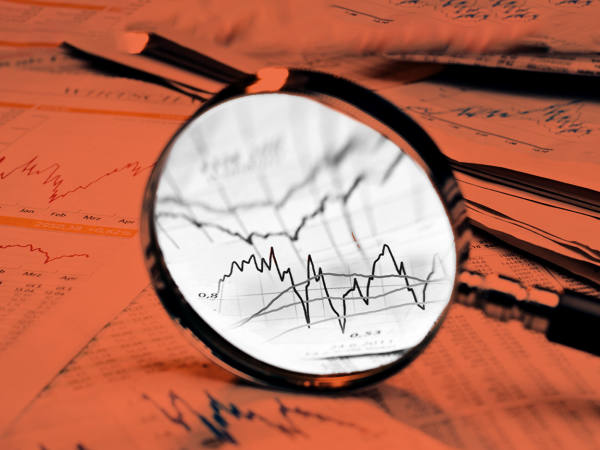- Higher interest rates are pushing up bond yields…
- …and the hurdle for equities’ risk-adjusted returns
- Lots of idea-generating content
It’s difficult to recall, given the sense of vertigo that has since set in, but a year ago the Bank of England’s base rate was 0.1 per cent. Last week, Andrew Bailey et al pushed through their sixth consecutive hike since December, raising the cost of money to 1.75 per cent.
Sensing more to come as inflation bears down, the gilt market has responded in kind. Two-year UK government bonds now yield 1.9 per cent; off their June highs, but trending upward.
Calling the outlook for interest rates and the yield curve is, as ever, the £1mn question, whatever that prize is worth in real terms in a year’s time. But it’s a question which even buy-and-hold equity investors should pay attention to, given its big implications for risk asset pricing.
To understand why, it’s important to note that government bond yields are viewed as the ‘risk-free’ rate of return, given their very low (though not impossible) risk of default. As such, they are as close to a free lunch as investors are likely to find, and therefore act as a sort of magnet in markets: the greater the yield on offer, the greater gilts’ magnetic pull for equity valuations. Today, there is little point in an investor owning a stock they expect to return 1.9 per cent over the next year if they can swap the stock for a ‘risk-free’ gilt alternative with a guaranteed return of 1.9 per cent.
This has further implications. While the risk-free rate removes worry, allowing us to get on with hugging predictable (nominal) bond returns, a stock price tells us very little about the worry (or volatility) an investor is likely to incur for the usually higher reward on offer.
Still, there are ways to understand this risk trade-off in the rear-view mirror.
One way to do so is via the Sharpe ratio, named after the Nobel Prize-winning economist William Sharpe. Also known as the 'reward-to-variability' ratio, it quantifies how much volatility an investor must stomach for every unit of reward they gain, which is defined as the return generated above the risk-free rate.
In essence, this means the extra amount of return you get per unit of risk. To calculate this, the Sharpe ratio takes an investment’s average returns above the risk-free rate over a given period and divides it by its standard deviation, to adjust for volatility. The higher the Sharpe ratio, the better the investment’s risk-adjusted performance.
Unsurprisingly, results for the past year aren’t pretty, even in the case of a more resilient index like the FTSE 100. The median Sharpe ratio across the index’s constituents was -0.31, due to most stocks’ failure to match the paltry 0.131 per cent risk-free rate on offer from two-year gilts a year ago. Narrow the historical window to the past three months, and the reward-to-worry trade has improved, even as bond yields have edged up and stagflation fears have exploded.
What the Sharpe ratio has to say about the future is a lot less clear, however, given the equation’s only defined input is the current risk-free rate. Even if – contrary to recent evidence – you put faith in analysts’ target prices as a reasonable proxy for expected returns, it is impossible to calculate volatility in advance. Assume a straight walk toward 12-month targets, and the highest forward-looking Sharpe ratios are – tautologically – those with the highest expected returns.
Still, apply this all to the FTSE 100 and one finds that four of the 10 highest forward-looking Sharpe ratio stocks – WPP (WPP), DCC (DCC), DS Smith (SMDS) and Smurfit Kappa (SKG) – offered some of the worst volatility-adjusted returns over the past three months (see table). After a certain point in any sell-off, the market price of risk starts to look cheaper.
| FTSE 100 highest Sharpe ratios | |
| 1yr | 3mth |
| Tesco | Prudential |
| Centrica | Imperial Brands |
| Meggitt | Burberry |
| Airtel Africa | Compass |
| BP | Melrose Industries |
| Relx | Coca-Cola |
| Shell | Unite |
| Glencore | Rolls-Royce |
| GlaxoSmithKline | Barclays |
| Reckitt Benckiser | Vodafone |
| FTSE 100 lowest Sharpe ratios | |
| 1yr | 3mth |
| Burberry | DS Smith |
| Abrdn | Tesco |
| Berkeley | DCC |
| Smith & Nephew | Mondi |
| M&G | Endeavour Mining |
| Aveva | Intertek |
| Unite | Smurfit Kappa |
| Mondi | B&M European Value |
| Unilever | WPP |
| Kingfisher | Hargreaves Lansdown |
| To 10 Aug 2022. Source: Refinitiv | |










